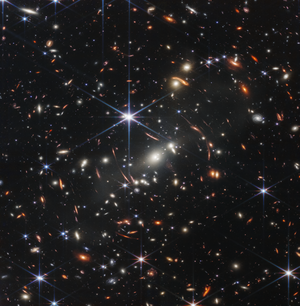Accept all cookies Accept only essential cookies See our Cookie Notice

About ESA
The European Space Agency (ESA) is Europe’s gateway to space. Its mission is to shape the development of Europe’s space capability and ensure that investment in space continues to deliver benefits to the citizens of Europe and the world.
Highlights
ESA - United space in Europe
This is ESA ESA facts Member States & Cooperating States Funding Director General Top management For Member State Delegations European vision European Space Policy ESA & EU Space Councils Responsibility & Sustainability Annual Report Calendar of meetings Corporate newsEstablishments & sites
ESA Headquarters ESA ESTEC ESA ESOC ESA ESRIN ESA EAC ESA ESAC Europe's Spaceport ESA ESEC ESA ECSAT Brussels Office Washington OfficeWorking with ESA
Business with ESA ESA Commercialisation Gateway Law at ESA Careers Cyber resilience at ESA IT at ESA Newsroom Partnerships Merchandising Licence Education Open Space Innovation Platform Integrity and Reporting Administrative Tribunal Health and SafetyMore about ESA
History ESA Historical Archives Exhibitions Publications Art & Culture ESA Merchandise Kids Diversity ESA Brand Centre ESA ChampionsLatest
Space in Member States
Find out more about space activities in our 23 Member States, and understand how ESA works together with their national agencies, institutions and organisations.
Science & Exploration
Exploring our Solar System and unlocking the secrets of the Universe
Go to topicAstronauts
Missions
Juice Euclid Webb Solar Orbiter BepiColombo Gaia ExoMars Cheops Exoplanet missions More missionsActivities
International Space Station Orion service module Gateway Concordia Caves & Pangaea BenefitsLatest
Space Safety
Protecting life and infrastructure on Earth and in orbit
Go to topicAsteroids
Asteroids and Planetary Defence Asteroid danger explained Flyeye telescope: asteroid detection Hera mission: asteroid deflection Near-Earth Object Coordination CentreSpace junk
About space debris Space debris by the numbers Space Environment Report In space refuelling, refurbishing and removingSafety from space
Clean Space ecodesign Zero Debris Technologies Space for Earth Supporting Sustainable DevelopmentLatest
Applications
Using space to benefit citizens and meet future challenges on Earth
Go to topicObserving the Earth
Observing the Earth Future EO Copernicus Meteorology Space for our climate Satellite missionsCommercialisation
ESA Commercialisation Gateway Open Space Innovation Platform Business Incubation ESA Space SolutionsLatest
Enabling & Support
Making space accessible and developing the technologies for the future
Go to topicBuilding missions
Space Engineering and Technology Test centre Laboratories Concurrent Design Facility Preparing for the future Shaping the Future Discovery and Preparation Advanced Concepts TeamSpace transportation
Space Transportation Ariane Vega Space Rider Future space transportation Boost! Europe's Spaceport Launches from Europe's Spaceport from 2012Latest

Cosmic seahorse
Thank you for liking
You have already liked this page, you can only like it once!
Streaks of light and bright arcs betray the presence of a vast gravitational lens in this image from the NASA/ESA/CSA James Webb Space Telescope. A galaxy cluster in the foreground has magnified distant galaxies, warping their shapes and creating the bright smears of light spread throughout this image. This effect, referred to by astronomers as gravitational lensing, occurs when a massive celestial object such as a galaxy cluster causes a sufficient curvature of spacetime for light to be visibly bent around it, as if by a gargantuan lens.
One of the consequential effects of gravitational lensing is that it can magnify distant astronomical objects, letting astronomers study objects that would otherwise be too faint or far away. This useful quirk of gravitational lensing has also been used to reveal some of the most distant galaxies humanity has ever encountered. The long, bright, and distorted arc spreading out near the core is one such example. A distant galaxy known as the Cosmic Seahorse, its brightness is greatly magnified by the gravitational lens, which has enabled astronomers to study star formation there.
This image was captured by NIRCam, Webb’s primary near-infrared camera, and contains the lensing galaxy cluster SDSS J1226+2149. It lies at a distance of around 6.3 billion light-years from Earth, in the constellation Coma Berenices. By combining Webb’s sensitivity with the magnifying effect of gravitational lensing, astronomers were able to use this gravitational lens to explore the earliest stages of star formation in distant galaxies. To do so, they relied on earlier studies by the NASA/ESA Hubble Space Telescope, which provided the ‘prescription’ for this gravitational lens.
This image shows only one observation from a programme designed to probe star formation in distant galaxies. As well as revealing how quickly stars form and characterising the environments in these galaxies that gave rise to new stars, these observations will demonstrate the capabilities of Webb and provide richly detailed datasets to the astronomical community. Astronomers expect Webb’s crystal-clear vision and cutting-edge instruments to provide new insights into star formation in distant, gravitationally lensed galaxies.
[Image description: Many small galaxies are scattered on a black background: mainly, white, oval-shaped and red, spiral galaxies. To the lower right is a galaxy cluster, with a very large and bright elliptical galaxy at its centre. Thin, reddish, stretched-out arcs surround it. One arc is thick and much brighter. Another red galaxy is large and warped, just next to the cluster core.]
-
CREDIT
ESA/Webb, NASA & CSA, J. Rigby -
LICENCE
ESA Standard Licence

Galactic gathering

Webb’s first deep field

Cosmic contortions

Webb glimpses the distant past















 Germany
Germany
 Austria
Austria
 Belgium
Belgium
 Denmark
Denmark
 Spain
Spain
 Estonia
Estonia
 Finland
Finland
 France
France
 Greece
Greece
 Hungary
Hungary
 Ireland
Ireland
 Italy
Italy
 Luxembourg
Luxembourg
 Norway
Norway
 The Netherlands
The Netherlands
 Poland
Poland
 Portugal
Portugal
 Czechia
Czechia
 Romania
Romania
 United Kingdom
United Kingdom
 Slovenia
Slovenia
 Sweden
Sweden
 Switzerland
Switzerland
























